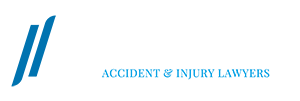With Tesla’s Autopilot and Full Self-Driving (“FSD”) systems increasingly making headlines, there’s a lot of confusion—and risk—around what these systems can, and can’t do. For owners of these vehicles, understanding the features, limitations, and legal implications can make a big difference in avoiding liability or proving a claim.
What is Tesla’s Autopilot and Full Self Driving Mode?
Tesla’s Autopilot is classified as a Level 2 autonomous driving system under SAE (Society of Automotive Engineers) definitions. That means it can assist with steering, acceleration, braking etc., but the human driver must remain engaged, keep their hands on the wheel, and be ready to take over.
- Core features include:
- Traffic-Aware Cruise Control: matches speed to traffic.
- Autosteer: helps the vehicle stay in its lane.
- Full Self-Driving enhancements (above Autopilot): for example, automatic lane changes, navigating highway interchanges, Autopark, Summon, etc. These still require driver supervision.
For a free legal consultation, call (303) 465-8733
Known Risks, Limitations, and Failures
- Misleading expectations: Despite names like “Autopilot” and “Full Self-Driving,” many users misunderstand how far the system can go. There have been criticisms that Tesla’s marketing language leads people to believe the car is more autonomous than it actually is.
- System limitations in complex or unusual conditions:
- Driver engagement problems: The system relies on the driver staying attentive. Studies have shown drivers sometimes disengage, or let the system drift into unsafe behaviour if they over-rely on it.
Safety investigations & crash data: U.S. regulators (like NHTSA) have flagged multiple fatal crashes involving Autopilot. An investigation over three years found at least 13 fatal crashes where Autopilot was involved.
Legal & Regulatory Issues
- Liability in accidents: When Autopilot is active, determining fault gets more complex. There may be liability on part of the driver (for not maintaining control) and/or Tesla (if the feature is defective or defects in design, manufacturing, or warning).
- False / Misleading Advertising Claims: Tesla has faced lawsuits and regulatory actions over claims that Autopilot or FSD systems are more capable than they are. For example, claims that their marketing misleads consumers as to how autonomous the vehicles are.
- Regulatory scrutiny:
- NHTSA and other bodies require Tesla to report crashes involving Autopilot/FSD features in certain timeframes.
- Recalls: Tesla recalled over 2 million vehicles for issues related to Autopilot, particularly concerning driver attention monitoring and warnings.
- Legal challenges in various jurisdictions about whether the systems comply with vehicle safety regulations, consumer protection laws, etc.
- Verdicts & Damages: There have been significant legal outcomes. One recent case awarded $243 million in damages in Florida over a fatal crash where Autopilot was found partially at fault.
Implications for Drivers & Victims
If you or someone you represent is involved in an accident involving Tesla’s Autopilot / FSD:
- Document everything: Accident reports, system logs (if available), photos, video, and any warnings Tesla gave about the feature’s limitations.
- Expert evaluation: Many cases require technical experts in automotive engineering, software/hardware design, and safety systems to determine if there was a defect or design flaw.
- Advertising & warnings: Did Tesla give sufficient warning about what the system cannot do? Were there disclaimers made clear? These can play a large role in assigning liability.
- Jurisdiction matters: Laws differ by state/country re product liability, consumer protection, autonomous vehicle regulation. What constitutes sufficient warning or manufacturer duty in one jurisdiction might differ in another.
What Law Should Do / What Regulators Are Doing
From a regulatory/legal reform perspective, some of the trends:
- Strengthening oversight and regulation of advanced driver-assist systems (ADAS), including clearer standards for what level of automation is claimed.
- Stricter requirements for reporting crashes, especially with ADAS systems, to ensure transparency.
- Consumer protection actions to address misleading marketing.
- Potential changes in how driver monitoring is designed (e.g. more effective monitoring of attention, not just steering wheel torque).
Click to contact our personal injury lawyers today
What Jordan Law Wants You to Know
- If you drive a Tesla or own one with Autopilot / FSD, don’t assume full autonomy—stay alert always.
- If involved in a crash with these systems engaged, you may have legal recourse against Tesla, depending on negligence, defect, or misrepresentation.
- For victims: you may need to engage experts to recover evidence (logs, software state, warnings).
Our Experience in Product Liability Cases
At Jordan Law, we’re proud to have Anne Dieruf on our team. With over fifteen years of trial experience in automotive and product liability cases, Anne has built her career holding large corporations accountable for consumer injuries. She combines deep legal expertise with compassion, guiding clients through every step of the process.
If you or a loved one has been injured in a crash involving Tesla Autopilot or any other advanced driver-assist technology, Jordan Law is here to help. Our team understands the complex mix of technology, liability, and personal injury law involved in these cases.
📞 Call us today for a free consultation.
